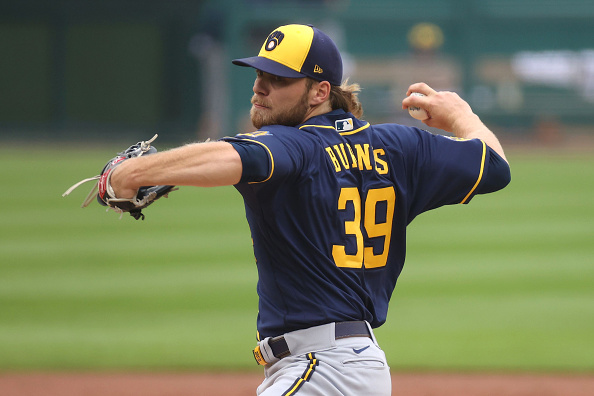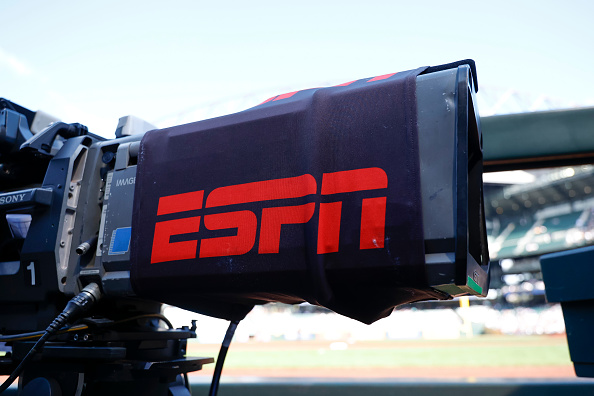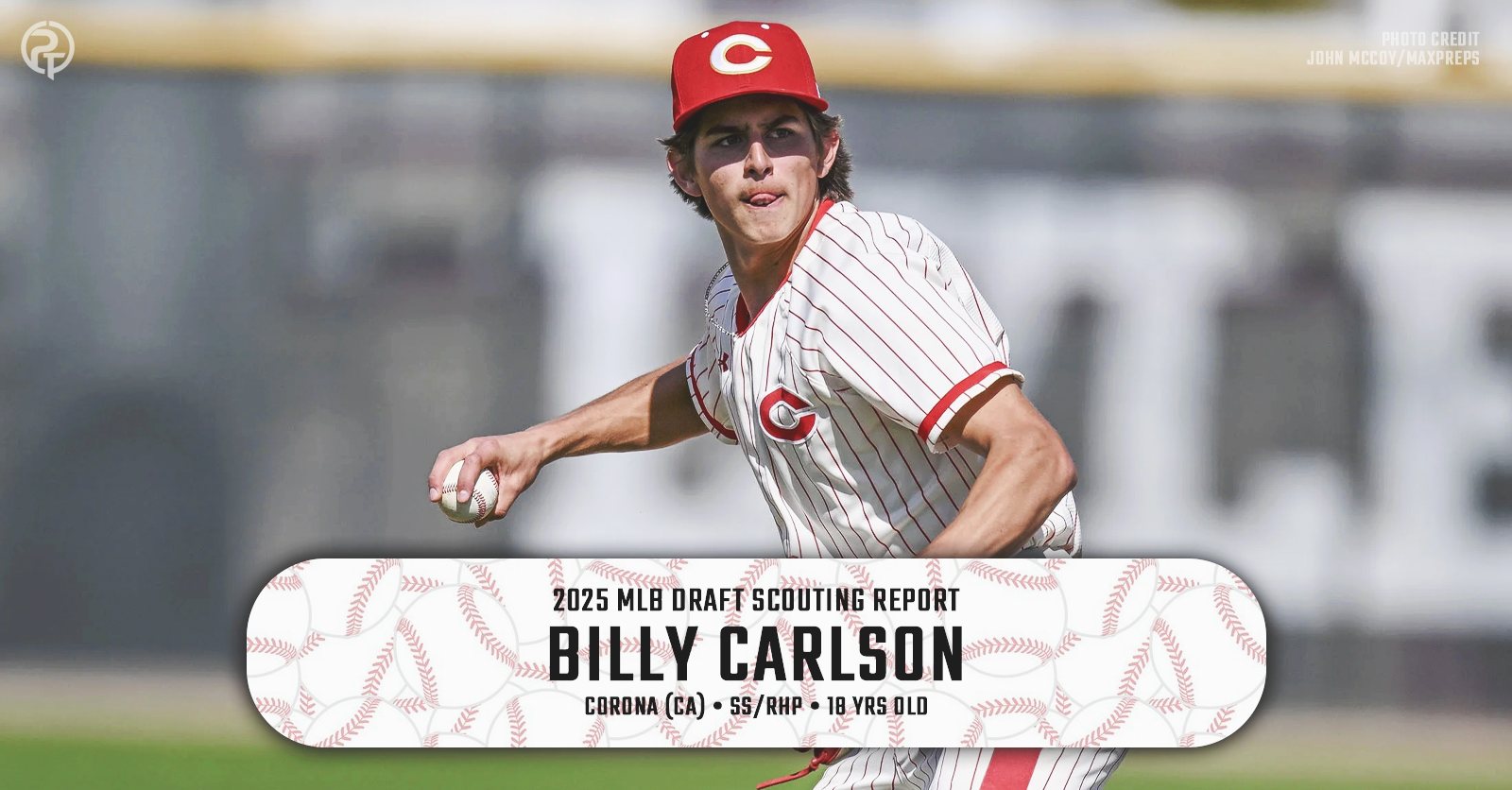They may not be the team with the most national recognition, but the Milwaukee Brewers have some filthy pitchers. Ace Brandon Woodruff and closer Josh Hader lead the rotation and bullpen, respectively. Who could forget about 2020 NL Rookie of the Year Devin Williams? But the Brewer who led the team in WAR and finished 6th in NL Cy Young voting last year was not Woodruff, Hader or Williams. It was Corbin Burnes, who was at a much different place in 2019 than ever before.
Early Potential
A fourth round draft pick by Milwaukee in 2016, Burnes debuted in 2018 as a 23-year-old reliever. He struck out 35 in 38 innings with a 1.000 WHIP and a 2.61 ERA over 30 appearances, which was promising. In 2019 the righty set his sight on the rotation, but everything went wrong. In 32 games (4 starts), Burnes struck out 70 batters in 49 innings, but allowed 52 runs (48 earned), for an 8.82 ERA. For those more “advanced” than ERA, he also had a 5.86 xERA and a .417 wOBA against, so the strikeouts couldn’t save him from the runs allowed.
Something obviously needed to change entering 2020, and the pitcher excelled. Starting out in the bullpen, he moved to the rotation from his 5th game and beyond. Overall, Burnes had a 2.11 ERA with 88 strikeouts and 5.6 H/9 in 59.2 innings. He was able to increase his strikeout rate while significantly lowering his ERA and improving just about every other category.
Time for a Change
Generally, player bounce-backs are not so cut-and-dry. However, with Burnes from 2019-20, the answer is simple: He completely revamped how he utilized his pitches, and this new mix allowed all of his pitches to improve. Burnes throws six pitches. Fastball, slider, curveball, changeup, sinker, and cutter.
That is the order that he threw them from highest-to-lowest in 2019, but at 52.5 percent for his fastball, and 31 percent for his slider, the other four pitches were fighting for 16.5 percent usage. Most of those pitches got crushed, with his slider being the outlier, allowing a .181 average against with a 57 percent whiff rate.
So, what did Burnes do, specifically? His two pitches he used the least in 2019, his sinker (3.7 percent usage) and cutter (0.9 percent), became his most common pitches in 2020. They had a 33.1 percent and 31.5 percent usage, respectively. The cutter finished 36 strikeouts, and batters had a .162 average against it. His fastball, which batters slugged .823 against in 2019, was thrown just 2.5 percent of the time. The slider’s usage decreased to 12.7 percent, while the curveball and changeup saw slightly more time.
Adjustments
After being thrown eight times in 2019, Burnes’ cutter brought high velocity and a high spin rate to his arsenal. It worked as a foil to left-handed hitters, who previously had a 1.271 OPS against him, which plummeted to .581 last year. With an average velocity of 93.2 MPH, the cutter had an average spin rate of 2919 RPM, which is elite for any pitch. The pitch also had 2.3 inches of horizontal break above average. He learned to throw it just about everywhere in the zone, but specifically in the bottom corners.
If Burnes’ slider was so dominant for him when nothing else was in 2019, then why did he move away from it last year? Well, Burnes decided to change it to more of a two-strike pitch, almost exclusively to right-handed batters. Almost always the slider was thrown outside of the zone. The move paid off, as the slider’s whiff rate increased to 60.3 percent, and the batting average against decreased to .103.
Breaking Bad
The last pitch I want to highlight from Burnes is his changeup, which like his cutter is thrown mostly to lefties. When you look at the spin rates of his other five pitches, the lowest is his fastball, at 2669 RPM. His changeup is on a completely different boat. At an average spin rate of 1944 RPM, the pitch was a big flip of the switch, to a low spinning ball that can really confuse hitters, especially when it is not a soft pitch, at an average velocity of 88.9 MPH. Compared to Burnes’ teammate, Brent Suter, that is multiple miles an hour harder than his fastball. This helped Burnes get even more swings-and-misses from an under-utilized part of his game in 2019.
Burnes was definitely a “low zone” pitcher in 2020, and that is distinctive with his slider, changeup and curveball. His cutter also was mostly thrown low, while his sinker was towards the middle of the plate. This allowed his worst pitch (by far) in 2019, his fastball, to shine in the 25 times Burnes threw it in the regular season. This fastball was his only pitch that was mostly up high in the zone, which was great for change. Only three at-bats ended on the fastball, but two were strikeouts.
These adjustments may not seem important on the surface. However, they are a great illustration of how mixing up how you use your pitches can drastically improve (or possibly harm) your stats. Since teams only played opponents in their region last year, fans have been discrediting other great Major League Central pitchers. Shane Bieber and Trevor Bauer are two examples thanks to weak opposing offenses.
The way Burnes tweaked his stuff from 2019 to 2020, his improvement was certainly not a product of facing bad teams.
Check us out on our socials:
Twitter: @PTSTNews and @TalkPrimeTime
Facebook Page: Prime Time Sports Talk
Join our Facebook Group: Prime Time Sports Talk
Instagram: @ptsportstalk
Follow Carter LaCorte on Twitter @CarterHudBlog
Main Image Credit:
Embed from Getty Images








2 Responses